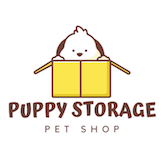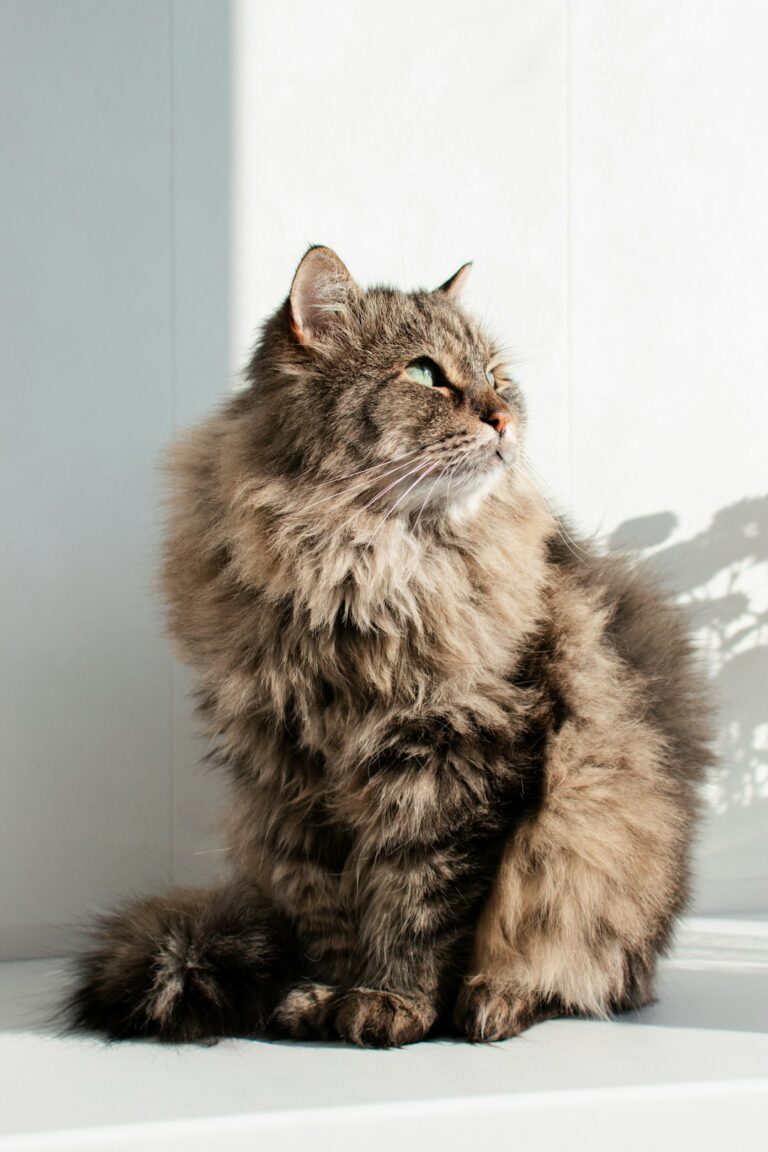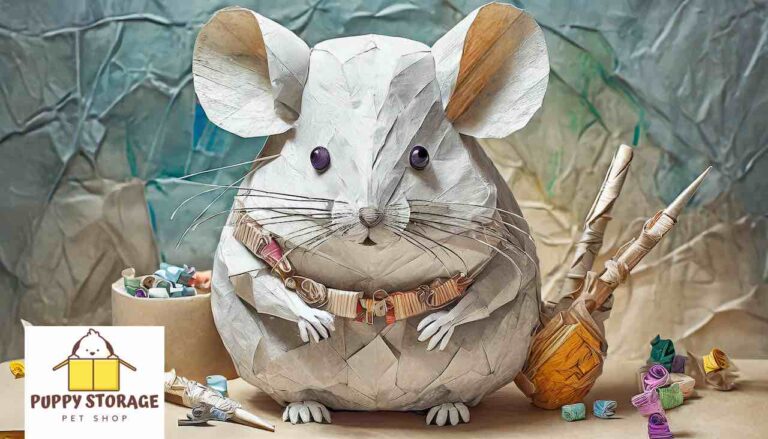Enhancing Physical and Mental Health Through Interactive Fun
What activities can pet owners engage in to promote physical and mental well-being in their furry companions?
In today’s fast-paced world, pet owners are increasingly recognizing the importance of promoting not only their own well-being but also that of their beloved furry companions. Pets, whether they’re cats, dogs, or other animals, benefit greatly from engaging in interactive activities that stimulate both their bodies and minds. From enriching games to outdoor adventures, there are countless ways to enhance physical and mental health through interactive fun for pets. In this blog, we’ll explore various activities and strategies that pet owners can incorporate into their routines to keep their furry friends happy, healthy, and thriving. Whether you’re looking for ways to bond with your pet or simply seeking to provide them with the best quality of life possible, join us as we delve into the world of interactive fun for pets.
Engaging Toys and Games
Engaging toys and games play a crucial role in promoting physical activity, mental stimulation, and overall well-being in pets. Here are some ideas to consider:
Interactive Puzzle Toys:
- Puzzle toys come in various shapes and designs, from treat-dispensing balls to interactive puzzles that require pets to maneuver objects to access hidden treats. These toys not only provide mental stimulation but also encourage problem-solving skills and keep pets entertained for extended periods.
Tug-of-War Toys:
- Tug-of-war toys are excellent for encouraging physical exercise and bonding between pets and their owners. Choose sturdy, well-made toys designed specifically for this activity to ensure safety and durability. Engaging in tug-of-war sessions can also help reinforce obedience commands and strengthen the bond between you and your pet.
Fetch Toys:
- Fetch toys, such as balls, frisbees, or flying discs, are classic favorites for dogs and provide excellent opportunities for physical exercise and mental stimulation. Whether playing fetch in the backyard or at the park, these toys allow pets to burn off energy, improve coordination, and engage their natural chasing instincts.
Interactive Laser Pointers:
- Laser pointers are a popular choice for stimulating cats’ natural hunting instincts and encouraging exercise. Simply shine the laser beam on the floor or walls, and watch as your cat pounces, chases, and jumps to catch the elusive light. However, it’s essential to use laser pointers safely and avoid shining the light directly into your pet’s eyes.
Chew Toys and Dental Treats:
- Chew toys and dental treats serve a dual purpose by providing both mental stimulation and promoting dental health in pets. Choose toys made from durable materials, such as rubber or nylon, that can withstand heavy chewing and help alleviate boredom and anxiety. Additionally, dental treats with textured surfaces can help clean your pet’s teeth and freshen their breath while they chew.
By incorporating a variety of engaging toys and games into your pet’s daily routine, you can ensure they receive the physical exercise and mental stimulation they need to stay happy, healthy, and mentally sharp.
Outdoor Adventures and Exploration
Outdoor adventures offer pets an opportunity to explore new environments, engage their senses, and enjoy physical exercise in the great outdoors. Here are some ways to enhance outdoor experiences for your furry companion:
Nature Hikes and Trail Walks:
- Take your pet on nature hikes or trail walks in local parks, nature reserves, or hiking trails. Choose trails suitable for your pet’s size, age, and physical abilities, and be mindful of any rules or regulations regarding pets in outdoor areas. Bring plenty of water, waste bags, and essential supplies for the journey.
Beach Days and Water Activities:
- If your pet enjoys water, consider planning beach days or water activities at pet-friendly beaches, lakes, or rivers. Allow your pet to splash in the water, play fetch on the shore, or simply soak up the sun while lounging on the sand. Ensure your pet wears a properly fitted life jacket if swimming in open water.
Camping and Backpacking Trips:
- Plan camping or backpacking trips with your pet to explore remote wilderness areas and spend quality time together in nature. Choose pet-friendly campgrounds or backcountry trails that allow pets and offer amenities such as designated tent sites, water access, and waste disposal stations.
Urban Adventures and City Walks:
- Even in urban environments, there are opportunities for outdoor adventures with your pet. Explore city parks, waterfront promenades, or bustling neighborhoods on leisurely walks or jogs. Take advantage of dog-friendly cafes, outdoor patios, and pet-friendly events happening in your city.
Nature Photography and Wildlife Watching:
- Bring along a camera or smartphone to capture memories of your outdoor adventures with your pet. Encourage your pet to pose for photos amidst scenic landscapes, blooming flowers, or majestic wildlife encounters. Practice responsible wildlife watching and keep your pet under control to avoid disturbing local fauna.
Trail Running and Canicross:
- For active pets and owners, consider trail running or canicross (running with your dog while attached to a waist belt and bungee leash). These activities provide both physical exercise and mental stimulation for you and your pet while exploring rugged terrain and scenic trails.
By embracing outdoor adventures and exploration with your furry companion, you can create memorable experiences, strengthen your bond, and provide enriching opportunities for physical and mental well-being in natural settings. Remember to prioritize safety, respect wildlife and natural habitats, and leave no trace to minimize your environmental impact while enjoying outdoor adventures with your pet.
Training and Enrichment Activities
Training and enrichment activities are essential for stimulating your pet’s mind, encouraging positive behaviors, and strengthening the bond between you and your furry friend. Here are some ideas to explore:
Obedience Training Classes:
- Enroll your pet in obedience training classes led by professional trainers or behaviorists. These classes provide structured learning environments where pets can learn basic commands, manners, and socialization skills while interacting with other dogs and people.
Agility Courses and Obstacle Training:
- Set up agility courses or obstacle courses in your backyard or local park to challenge your pet’s agility, coordination, and problem-solving abilities. Use agility equipment such as tunnels, hurdles, weave poles, and agility ramps to create engaging and stimulating challenges for your pet.
Scent Work and Nose Games:
- Engage your pet’s sense of smell by incorporating scent work or nose games into their daily routine. Hide treats or toys around the house or yard and encourage your pet to use their nose to locate them. You can also purchase scent work kits or enroll in scent detection classes to explore more advanced scent-based activities.
Trick Training and Fun Commands:
- Teach your pet a variety of fun tricks and commands to keep training sessions enjoyable and rewarding. From basic tricks like sit, stay, and shake to more advanced behaviors like roll over, play dead, and high five, trick training provides mental stimulation and strengthens the bond between you and your pet.
Interactive Feeding and Food Dispensing Toys:
- Incorporate interactive feeding and food dispensing toys into your pet’s daily routine to turn mealtime into a mentally stimulating activity. Puzzle feeders, treat balls, and food dispensing toys require pets to work for their food, encouraging problem-solving skills and providing enrichment during mealtime.
Brain Games and DIY Enrichment Activities:
- Get creative with DIY enrichment activities that challenge your pet’s mind and keep them entertained. Create homemade puzzle toys using household items like cardboard boxes, toilet paper rolls, and plastic bottles, or hide treats inside puzzle feeders or snuffle mats for your pet to discover.
Clicker Training and Positive Reinforcement:
- Utilize clicker training and positive reinforcement techniques to teach new behaviors and reinforce desired actions in your pet. Clicker training involves using a clicker device to mark desired behaviors, followed by a reward such as treats or praise, to reinforce the behavior.
Interactive Games and Playtime:
- Make playtime interactive and engaging by incorporating games like fetch, tug-of-war, hide-and-seek, or chase into your pet’s daily routine. These games provide physical exercise, mental stimulation, and opportunities for bonding between you and your pet.
By incorporating a variety of training and enrichment activities into your pet’s daily routine, you can keep them mentally sharp, physically fit, and emotionally fulfilled while strengthening your bond and fostering a positive relationship based on trust and communication.
Interactive Feeding and Treat Dispensing
Interactive feeding and treat dispensing are excellent ways to provide mental stimulation and enrichment for your pet during mealtime. Here are some ideas to explore:
Puzzle Feeders:
- Puzzle feeders are specially designed toys that require pets to work for their food by engaging in problem-solving behaviors. These toys come in various shapes and designs, such as maze feeders, rolling treat balls, or rotating discs. As your pet interacts with the puzzle feeder, they are rewarded with small amounts of food or treats, encouraging them to use their natural instincts and cognitive abilities to retrieve their meal.
Snuffle Mats:
- Snuffle mats are interactive feeding mats with shaggy fabric or fleece strips that mimic grass. Sprinkle dry kibble or small treats onto the mat, then encourage your pet to use their sense of smell to forage and search for the hidden goodies. Snuffle mats provide mental stimulation, encourage natural sniffing behaviors, and slow down fast eaters by promoting slower, more mindful feeding.
Treat-Dispensing Toys:
- Treat-dispensing toys are versatile tools for providing mental stimulation and reward-based enrichment. These toys typically have openings or compartments where you can insert treats or kibble. As your pet interacts with the toy, treats are dispensed intermittently, encouraging them to engage in playful behavior while working to access the hidden rewards.
DIY Enrichment Activities:
- Get creative and make your own interactive feeding and treat dispensing toys using household items. For example, you can repurpose empty cardboard boxes, toilet paper rolls, or plastic bottles to create homemade puzzle feeders or treat-dispensing toys. Fill these DIY toys with kibble or treats, then seal them shut or cut small holes for your pet to access the rewards.
Slow Feeder Bowls:
- Slow feeder bowls are designed with raised ridges, grooves, or obstacles that make it more challenging for pets to consume their food quickly. By slowing down mealtime, these bowls promote healthier eating habits, prevent gulping or bloating, and provide mental stimulation as pets navigate around the obstacles to access their food.
Adjustable Treat Dispensers:
- Consider using adjustable treat dispensers that allow you to customize the difficulty level to suit your pet’s skill and experience. These toys typically feature adjustable openings or difficulty settings that you can modify to make the dispensing mechanism more challenging as your pet becomes more proficient at solving the puzzle.
Mealtime Games and Training:
- Turn mealtime into a fun and interactive activity by incorporating games or training exercises. Use treat-dispensing toys as rewards during training sessions to reinforce obedience commands or teach new behaviors. Engage your pet in simple games like hide-and-seek or scent games using treats to encourage mental stimulation and physical activity.
By incorporating interactive feeding and treat dispensing into your pet’s routine, you can provide mental enrichment, encourage natural behaviors, and make mealtime more engaging and enjoyable for your furry friend. Experiment with different toys and activities to find what works best for your pet’s preferences and abilities, and always supervise your pet during playtime to ensure their safety and well-being.
Socialization and Playdates
Socialization and playdates are crucial aspects of your pet’s overall well-being, providing opportunities for them to interact with other animals and people, learn appropriate social behaviors, and burn off excess energy through play. Here are some ways to enhance socialization and organize enjoyable playdates for your furry friend:
Dog Parks and Playgrounds:
- Take your dog to local dog parks or designated dog-friendly areas where they can interact and play with other dogs off-leash. Dog parks provide valuable socialization opportunities and allow dogs to engage in natural behaviors like running, chasing, and wrestling in a safe and supervised environment.
Playdates with Friends and Family:
- Arrange playdates with friends, family members, or neighbors who have well-behaved pets that get along well with yours. Hosting playdates at home or in a familiar environment can help reduce stress and anxiety for your pet while allowing them to socialize and bond with familiar faces.
Group Training Classes:
- Enroll your pet in group training classes or obedience courses that incorporate socialization exercises and group activities. These classes provide structured learning environments where pets can interact with other dogs and people while practicing obedience commands and manners under the guidance of a professional trainer.
Pet-Friendly Events and Meetups:
- Attend pet-friendly events, meetups, or gatherings in your community where pets and their owners come together to socialize and participate in fun activities. Look for events like dog-friendly festivals, charity walks, or pet parades where your pet can mingle with other animals and enjoy new experiences in a social setting.
Structured Play Sessions:
- Organize structured play sessions with other pet owners in your neighborhood or community. Choose safe and secure locations such as fenced-in yards, community parks, or indoor play areas where pets can interact under supervision. Set up agility equipment, toys, or games to encourage active play and engagement among the group.
Daycare or Pet Sitting Services:
- Consider enrolling your pet in a reputable daycare facility or hiring a professional pet sitter who offers socialization services. Daycare centers provide supervised playtime and social interaction with other dogs, while pet sitters can arrange playdates and outings tailored to your pet’s preferences and personality.
Monitoring and Supervision:
- Regardless of the setting or activity, always supervise your pet during socialization and playdates to ensure their safety and well-being. Watch for signs of stress, discomfort, or aggression, and intervene if necessary to prevent conflicts or misunderstandings. Encourage positive interactions and reward calm and friendly behavior with praise, treats, or toys.
By incorporating socialization and playdates into your pet’s routine, you can help them develop essential social skills, build confidence, and maintain a healthy and balanced lifestyle. Whether it’s romping at the dog park, attending group training classes, or hosting playdates with friends, these opportunities for social interaction are invaluable for your pet’s physical and mental well-being.
In conclusion, prioritizing interactive fun and engagement in your pet’s daily routine is essential for enhancing their physical and mental well-being. Through activities such as engaging toys and games, outdoor adventures, training and enrichment, interactive feeding and treat dispensing, and socialization and playdates, you can provide your furry companion with the stimulation and enjoyment they need to thrive. By incorporating these interactive elements into their lifestyle, you not only promote physical fitness and mental stimulation but also strengthen the bond between you and your pet. Remember to tailor activities to your pet’s preferences and abilities, and always prioritize their safety and comfort. With a thoughtful approach to interactive fun, you can ensure that your pet leads a happy, healthy, and fulfilling life.




































